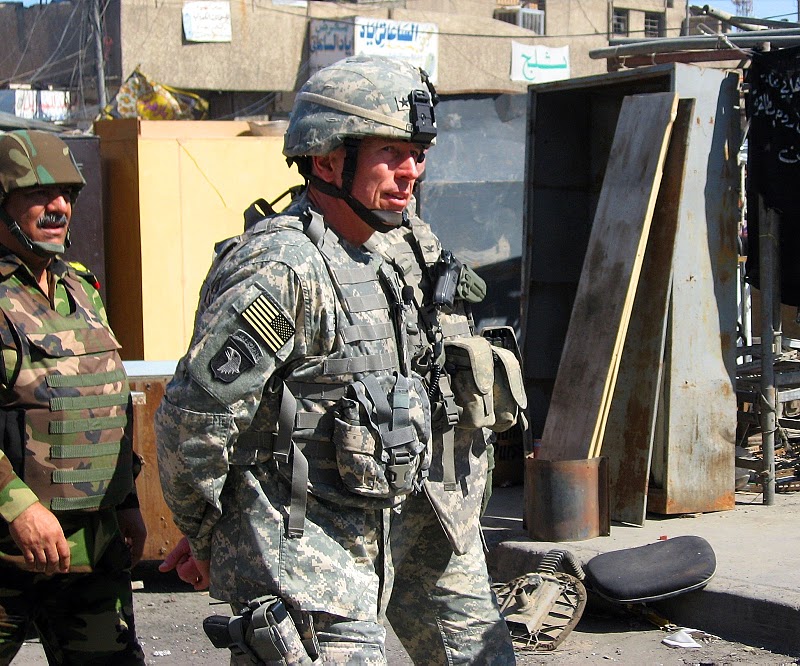Afghanistan Special: How the US Kills Its Allies and Helps a New Taliban Generation (Fitzgerald)
 EA's Counter-Insurgency correspondent David Fitzgerald writes:
EA's Counter-Insurgency correspondent David Fitzgerald writes:
Last week the Wall Street Journal described the unfortunate fate of a former Hezb-e-Islami commander who reintegrated with the Afghan government in Baghlan Province in northern Afghanistan. The former insurgent, Commander Sher, was killed in an American airstrike summoned to repel a massed Taliban attack on his compound. Since his death, his fighters have been idling in the provincial capital while the Taliban effectively control the town of Shahabuddin.
In a similar vein, Jeremy Scahill of The Nation describes how Mullah Sahib Jan, a former Taliban Imam in Logar Province, also met his death at American hands. Sahib Jan was apparently killed by American Special Forces in a raid on his compound in January of this year. Scahill reports:
"He was preaching to the Taliban, encouraging them to come to the government, telling the fighters there were a lot of benefits to laying down their arms," says Mohammed Anwar, director of Logar's reconciliation commission and an adviser to a local tribal council. Council officials credit Sahib Jan with putting Taliban fighters on the road to reconciliation.
So here we have two different strands of the American strategy in Afghanistan –-- reconciliation/reintegration and the increased tempo of "kinetic" operations aimed at the insurgent leadership – working directly against each other. The airstrike that killed Sher was a tragic mistake, but Sahib Jan was specifically targeted by ISAF, despite having been working with the Afghan government for months.
In an op-ed in the New York Times two weeks ago (also available as a longer version at the Huffington Post), Scott Atran points out another way the strategy is contradicting itself. Atran argues that increased military pressure on the Taliban is only leading to a newer, more intransigent generation of fighters:
The United States claims to have killed thousands of Taliban in recent months, mostly foot soldiers and midlevel commanders. But those 25-year-old foot soldiers are being replaced by teenage fighters, and the 35-year-old midlevel commanders by 20-something students straight out of the religious schools called madrasas, which are the only form of education available in many rural areas.
These younger commanders and their fiercely loyal fighters are increasingly removed from the dense networks of tribal kinship and patronage, or qawm, and especially of friendship born of common experiences, or andiwali, that bind together the top figures in the established insurgent groups like the Quetta Shura and the Haqqani network. Indeed, it is primarily through andiwali — overlapping bonds of family, schooling, years together in camps, combat service, business partnership --- that talks between the adversaries, including representatives of Hamid Karzai, Afghanistan’s president, and Mullah Omar, the Taliban’s ultimate leader, have continued over the years.
These new Taliban warriors, however, are increasingly independent, ruthless and unwilling to compromise with foreign infidels and their associates. They yearn to fight, and describe battle as going on vacation from the long, boring interludes of training and waiting between engagements. They claim they will fight to the death as long as any foreign soldiers remain, even if only in military bases.
In Atran's version of events, US efforts at pressuring the Taliban command by targeting their mid-level leadership is entirely counter-productive. Much as US special forces killed off a commander who was working for them, the International Security Assistance Force appears to be targeting the very commanders whose tribal ties make reconciliation with the Karzai regime possible.
So what to make of all this --- the misplaced bomb, the bungled raid, the unintended consequences of tactical success? One common element is the poor quality of ISAF intelligence. In September, General David Petraeus, the commander of US forces in Afghanistan, he told the Wall Street Journal:
We have never had the granular understanding of local circumstances in Afghanistan that we achieved over time in Iraq....One of the key elements in our ability to be agile in our activities in Iraq during the surge was a pretty good understanding who the power brokers were in local areas, how the systems were supposed to work, how they really worked.
Petraeus’ intelligence chief, Major General Michael Flynn, wrote a scathing report last April claiming, "‘Eight years into the war in Afghanistan, the US intelligence community is only marginally relevant to the overall strategy."
Certainly, the killing of Sahib Jan and the rise of a new generation of more militant Taliban both point to a severe lack of "granular understanding of local circumstances". What is curious is that American officials and observers have been talking about granular understanding in Afghanistan for years. The author of the Times piece, Scott Atran, is an anthropologist, and it was anthropologists such as Montgomery McFate and David Kilcullen who advocated aid to intelligence-gathering by sending social scientists to map the "human terrain" in Afghanistan and Iraq.
Four years into the "human terrain systems" programme, why is it still possible for special forces to target a "reconciled" Taliban? Why is ISAF inadvertently killing off those Taliban with whom it is possible to negotiate?

 Monday, November 8, 2010 at 5:44
Monday, November 8, 2010 at 5:44
Reader Comments